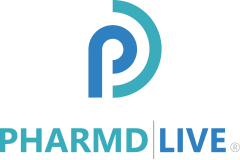Remote Patient Monitoring (RPM)
What is Remote Patient Monitoring (RPM)?
Remote patient monitoring uses digital technologies to monitor, capture, and transmit patient medical data and other health information to healthcare providers for assessment.
RPM programs reduce hospitalizations, readmissions, and lengths of hospital stays — helping to improve quality of life and minimize costs.
RPM programs also help keep people healthy, allow older or disabled patients to live at home longer rather than having to move into nursing facilities.
Remote patient monitoring gained popularity as a technology to support the health and wellness of patients after the 2020 changes to CPT codes that characterized RPM as one of the most lucrative Medicare care management programs.
When RPM also showed value during the COVID-19 pandemic for patients who were instructed to reduce travel and direct contact with others, the federal government expanded Medicare coverage of RPM services from just those with chronic conditions to those with chronic and/or acute conditions.
Remote physiologic monitoring expands access to care and addresses changes in health status in order to avoid crisis — translating into substantial annual savings due to a reduction in emergency room visits as well as hospital admissions and readmissions.
Benefits of Remote Patient Monitoring
The RPM experience offers significant and widespread benefits to providers as an efficient and effective way for practitioners to closely monitor chronic health conditions without requiring the patient to visit the practice.
Examples of Remote Patient Monitoring Devices
Now that you understand some of the reasons practices choose to offer remote physiologic management services, let’s take a look at the devices most commonly used to deliver RPM services.
Thanks in part to increased patient interest and an overhaul of RPM CPT codes that helped spur interest in RPM, device options are more extensive than in the past, including devices that can help meet both short- and long-term needs of patients.
Knowing more about which devices are available can help you understand which choices not only fit your practice needs but also help maximize revenue potential.
Examples of Remote Patient Monitoring Applications
When we consider the ease with which remote patient monitoring can be delivered using technology, it’s easy to see how RPM has the potential to transform the delivery of care in the United States.
To further examine the potential impact of RPM on patient care, we’ve identified nine of the top patient applications for remote patient monitoring, broken down by three of the practice specialties most frequently offering and prescribing RPM to their patients: cardiology, pulmonology, and endocrinology.
Financial Considerations of a Remote Patient Monitoring Program
Even if you are convinced of the patient benefits that a remote patient monitoring (RPM) program will deliver, you may still have questions about the financial implications for your practice — and how to best make a program financially worthwhile.
You will need to take a number of essential steps in advance to help ensure the success of the new remote patient monitoring program.
These include everything from choosing the RPM system that will drive your program to develop an effective mechanism for educating patients on RPM.
There is also the not-so-small matter of understanding how you will get paid for your services.
That’s why we have broken down the steps here and provided a quick checklist guide for current remote physiologic monitoring CPT codes.
The good news is that, as you will find, building a successful RPM program is fairly straightforward.
Choosing a System
After considering all of the necessary information regarding what makes a quality RPM program, you’re ready to check out existing organizations and choose the program that’s right for you.
The RPM industry is quickly expanding and offers practices a large number of program options from which to choose.
In order to figure out which remote patient monitoring system RPM system will be the best fit, here are a few questions that will help take the guesswork out of the process.
Executing a Successful Remote Patient Monitoring Program
The key to the short- and long-term viability of your remote patient monitoring program lies in educating the patient to ensure buy-in and in implementing quality RPM technologies that function properly with as little post-launch attention as possible.
Conclusion
The bottom line is that RPM programs are here to stay.
Even without a global pandemic, RPM has been quietly progressing for decades — it has now become an integral element of our nation’s healthcare delivery system.
Not only are Medicare and private health insurers noticing the cost-effectiveness and positive health outcomes associated with RPM, but federal and commercial payers are also supporting RPM services — and patients are increasingly looking for them.
In the very near future, patient and practitioner understanding of RPM programs will continue to increase, RPM technologies will become more advanced, and acceptance and adoption will respond to the growth.
This equation represents new opportunities for practices to better serve current patients as well as recruit new patients.
Find out more about the potential to launch a remote patient monitoring program in your practice.
PharmD Live delivers a variety of remote patient monitoring resources and solutions designed specifically for high-risk, high-cost patients with chronic diseases and the organizations that treat them.
Discover how a partnership with PharmD Live empowers physicians, health systems, Accountable Care Organizations (ACOs), Integrated Delivery Networks (IDNs), and payors to do more for the patients they serve.
Source(s)
- The American Journal of Managed Care
- Center for Connected Health Policy
- Centers for Disease Control
- Heart.org
- Medicaid.gov
- National Center for Biotechnology Information
- ScienceDirect
- U.S. Food & Drug Administration
About PharmD Live
Designed explicitly for high-risk, high-cost patients with chronic diseases, PharmD Live combines a clinical pharmacist-led approach with AI-driven telehealth technology to optimize patient outcomes, enhance clinical efficiency, and maximize value-based care profitability across a range of healthcare verticals. For more information, call +1 (202) 765-1429 or visit https://www.pharmdlive.com/.
